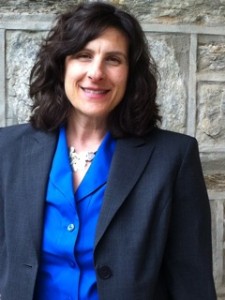Cross-posted to eJewish Philanthropy
by Debra Brosan and Rabbi Hayim Herring
Recently, we conducted thirteen informal phone interviews with federation directors, rabbis and lay leaders from around the country to learn first hand about the landscape of synagogue collaborations and potential mergers.
We spoke with leaders primarily along the East Coast and in the Midwest. Some had experienced population decline by snowbirds who had permanently moved to warmer parts of the country or had lost a significant percentage of the Jewish population because of the economic recession. We also spoke with a few other community leaders in areas that we suspected were potentially ripe for collaboration because it’s just good business to partner, collaborate and consolidate.
We weren’t interested in conducting a rigorous scientific study, but simply wanted to gain an impressionistic view of the level of discussion and activity around collaboration. We had read several recent stories in the Jewish press about creative congregational collaborations and were also aware of consolidations happening in the broader nonprofit community. Collaboration is one of our deep interests, and we have helped shepherd a number of congregations, Jewish organizations and nonprofit organizations through fruitful partnerships. We know that there is ample room for more collaboration, but we wanted to conduct some due diligence before drawing conclusions.
In the weeks ahead, we will be sharing our observations on what we heard. However, we first want to set some parameters by what we mean by collaboration. Collaboration runs along a continuum, from single programs to longer-lasting alliances. Collaboration should never be an end goal unto itself, but should serve a greater good for an identified public by enabling at least two organizations to offer a higher level of service while retaining their own identity. The goals of the collaboration should drive the structure that it takes and there are several different informal and formal structures for collaboration that include networks, strategic alliance and joint management corporations – to name but a few.


The bottom line is that the leaders with whom we spoke saw the opportunity for greater synagogue collaboration and, in some cases, mergers, but were cautious about the prospect of congregational leaders taking a proactive stance.
So if the potential is great, why is there such hesitance? We believe that it is in part due to the emotional dimensions that are rarely discussed.
Sometimes, well-intentioned funders will require collaboration as a requirement for synagogues or organizations even to apply for a grant without offering support to help facilitate it. This requirement may create compliance with a requirement, but does not build the emotional investment and trust required for a fruitful collaboration.
Other times, synagogues resist collaboration even when it makes sense because they fear a loss of their own identity and a loss of members. Those feelings help to explain why very often congregations within close proximity of one another will offer virtually the same entry-level introductory courses in Judaism or in Hebrew language, when by collaborating, they could expand the range and offer beginning, intermediate and advanced learning opportunities. Additionally, synagogues may rightfully be wary that one member of the collaboration will bear more than its share of the load, while the other benefits from the collaboration without the same investment.
We strongly believe that there is tremendous opportunity for significant collaboration among synagogues. Hebrew language instruction, Jewish history, board development, Jewish culture and service learning for teens are blind to denominational differences. Theoretically, synagogues should also be able to collaborate in these and many other areas. It remains even a greater mystery to us why synagogues do not pool resources for IT services, joint purchasing and maintenance. Often, congregations need a neutral outside party to facilitate discussions that provide not only the potential range of options, but also surface the emotional dimensions that inhibit collaboration if unacknowledged.
From our own experience, we know how challenging building and sustaining collaborations can be. But we also have seen the many positive benefits of continuing to work at this effort. We hope that this post will begin to spark some more discussion in the synagogue world that can help move the sincere, heartfelt rhetoric about the need for collaboration into a living reality. And stay tuned… there’s more to follow.
Debra Brosan is C.E.O. at gestaltworks.net and Rabbi Hayim Herring is C.E.O. at HayimHerring.com.
Tags: collaboration, Congregations, Debra Brosan, eJewish Philanthropy, Experience, Hebrew Language Instruction, Hesitation, Jewish Federations, leadership, Rabbis, Synagogues
